Enhanced Sp1/YY1 Expression Directs CBS Transcription to Mediate VEGF-Stimulated Pregnancy-Dependent H2S Production in Human Uterine Artery Endothelial Cells
- PMID: 34657441
- PMCID: PMC8585697
- DOI: 10.1161/HYPERTENSIONAHA.121.18190
Enhanced Sp1/YY1 Expression Directs CBS Transcription to Mediate VEGF-Stimulated Pregnancy-Dependent H2S Production in Human Uterine Artery Endothelial Cells
Abstract
[Figure: see text].
Keywords: endothelial cells; humans; hydrogen sulfide; pregnancy; uterine artery; vascular endothelial growth factor A.
Conflict of interest statement
Figures

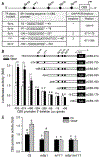
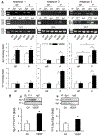
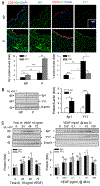
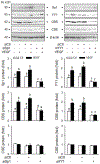
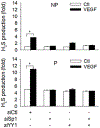
Similar articles
-
Pregnancy Augments VEGF-Stimulated In Vitro Angiogenesis and Vasodilator (NO and H2S) Production in Human Uterine Artery Endothelial Cells.J Clin Endocrinol Metab. 2017 Jul 1;102(7):2382-2393. doi: 10.1210/jc.2017-00437. J Clin Endocrinol Metab. 2017. PMID: 28398541 Free PMC article.
-
E2β stimulates ovine uterine artery endothelial cell H2S production in vitro by estrogen receptor-dependent upregulation of cystathionine β-synthase and cystathionine γ-lyase expression†.Biol Reprod. 2019 Feb 1;100(2):514-522. doi: 10.1093/biolre/ioy207. Biol Reprod. 2019. PMID: 30277497 Free PMC article.
-
Augmented H2S production via cystathionine-beta-synthase upregulation plays a role in pregnancy-associated uterine vasodilation.Biol Reprod. 2017 Mar 1;96(3):664-672. doi: 10.1095/biolreprod.116.143834. Biol Reprod. 2017. PMID: 28339573 Free PMC article.
-
Ovine uterine artery hydrogen sulfide biosynthesis in vivo: effects of ovarian cycle and pregnancy†.Biol Reprod. 2019 Jun 1;100(6):1630-1636. doi: 10.1093/biolre/ioz027. Biol Reprod. 2019. PMID: 30772913 Free PMC article.
-
Transcription factors YY1, Sp1 and Sp3 modulate dystrophin Dp71 gene expression in hepatic cells.Biochem J. 2016 Jul 1;473(13):1967-76. doi: 10.1042/BCJ20160163. Epub 2016 May 3. Biochem J. 2016. PMID: 27143785
Cited by
-
H2S donor GYY4137 mitigates sFlt-1-induced hypertension and vascular dysfunction in pregnant rats†.Biol Reprod. 2024 Oct 14;111(4):879-889. doi: 10.1093/biolre/ioae103. Biol Reprod. 2024. PMID: 38938086 Free PMC article.
-
Role of post-translational modifications of Sp1 in cardiovascular diseases.Front Cell Dev Biol. 2024 Aug 26;12:1453901. doi: 10.3389/fcell.2024.1453901. eCollection 2024. Front Cell Dev Biol. 2024. PMID: 39252788 Free PMC article. Review.
-
ICI 182,780 Attenuates Selective Upregulation of Uterine Artery Cystathionine β-Synthase Expression in Rat Pregnancy.Int J Mol Sci. 2023 Sep 21;24(18):14384. doi: 10.3390/ijms241814384. Int J Mol Sci. 2023. PMID: 37762687 Free PMC article.
-
Leishmania regulates host YY1: Comparative proteomic analysis identifies infection modulated YY1 dependent proteins.PLoS One. 2025 May 15;20(5):e0323227. doi: 10.1371/journal.pone.0323227. eCollection 2025. PLoS One. 2025. PMID: 40373059 Free PMC article.
-
Mapping Pregnancy-dependent Sulfhydrome Unfolds Diverse Functions of Protein Sulfhydration in Human Uterine Artery.Endocrinology. 2023 Aug 1;164(9):bqad107. doi: 10.1210/endocr/bqad107. Endocrinology. 2023. PMID: 37439247 Free PMC article.
References
-
- Nelson SH, Steinsland OS, Suresh MS, Lee NM. Pregnancy augments nitric oxide-dependent dilator response to acetylcholine in the human uterine artery. Hum Reprod. 1998;13:1361–1367 - PubMed

